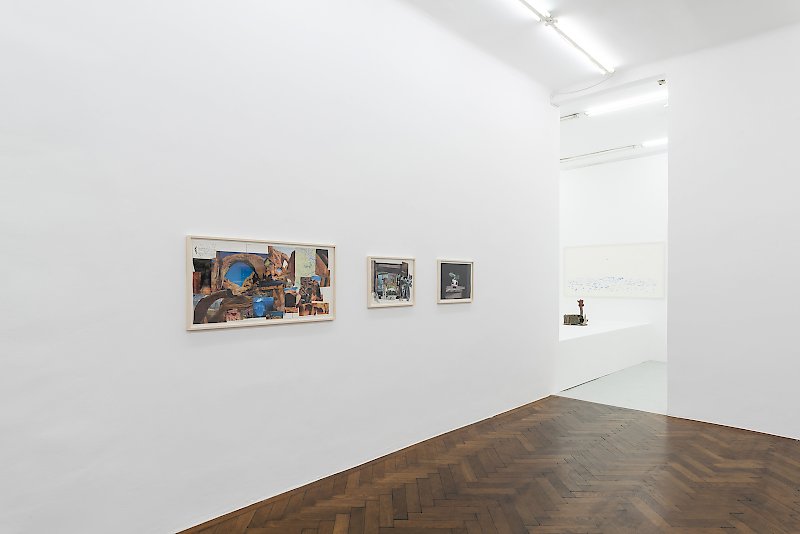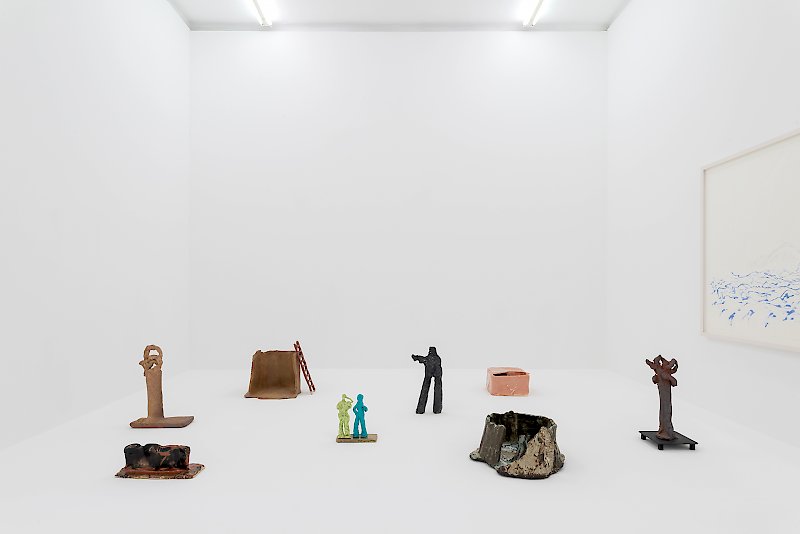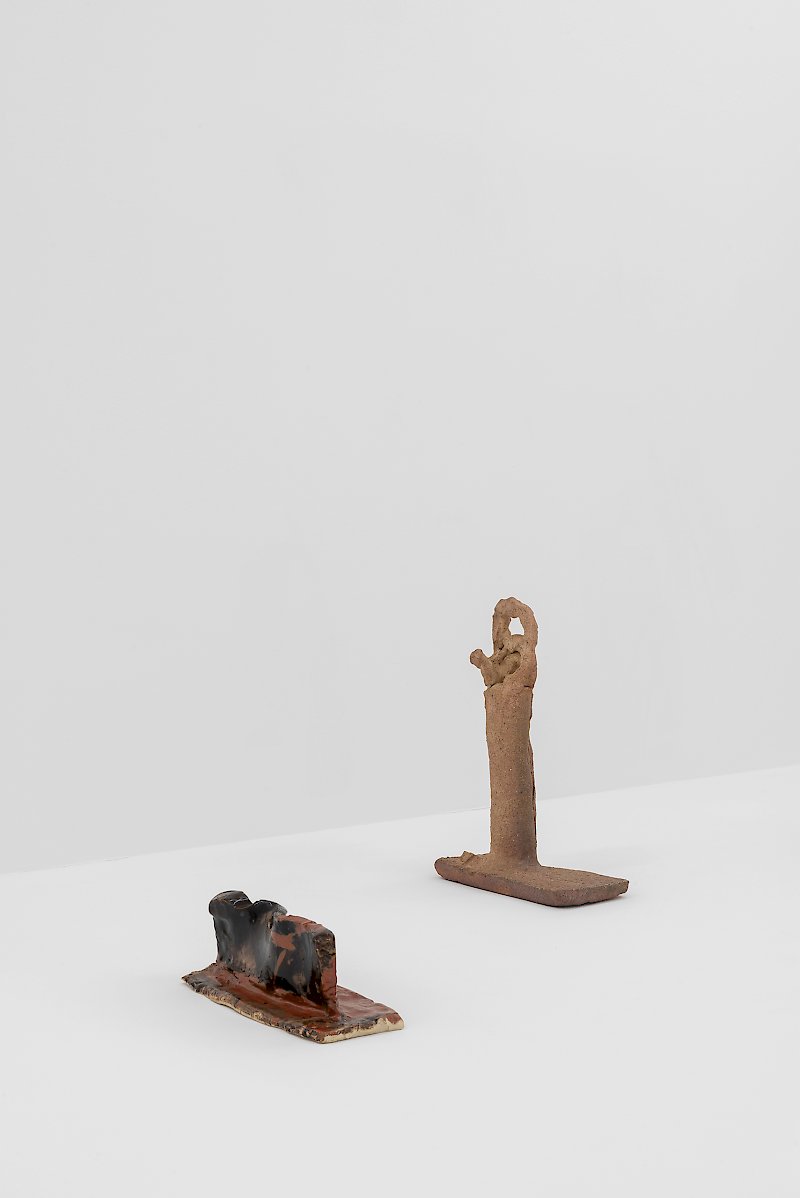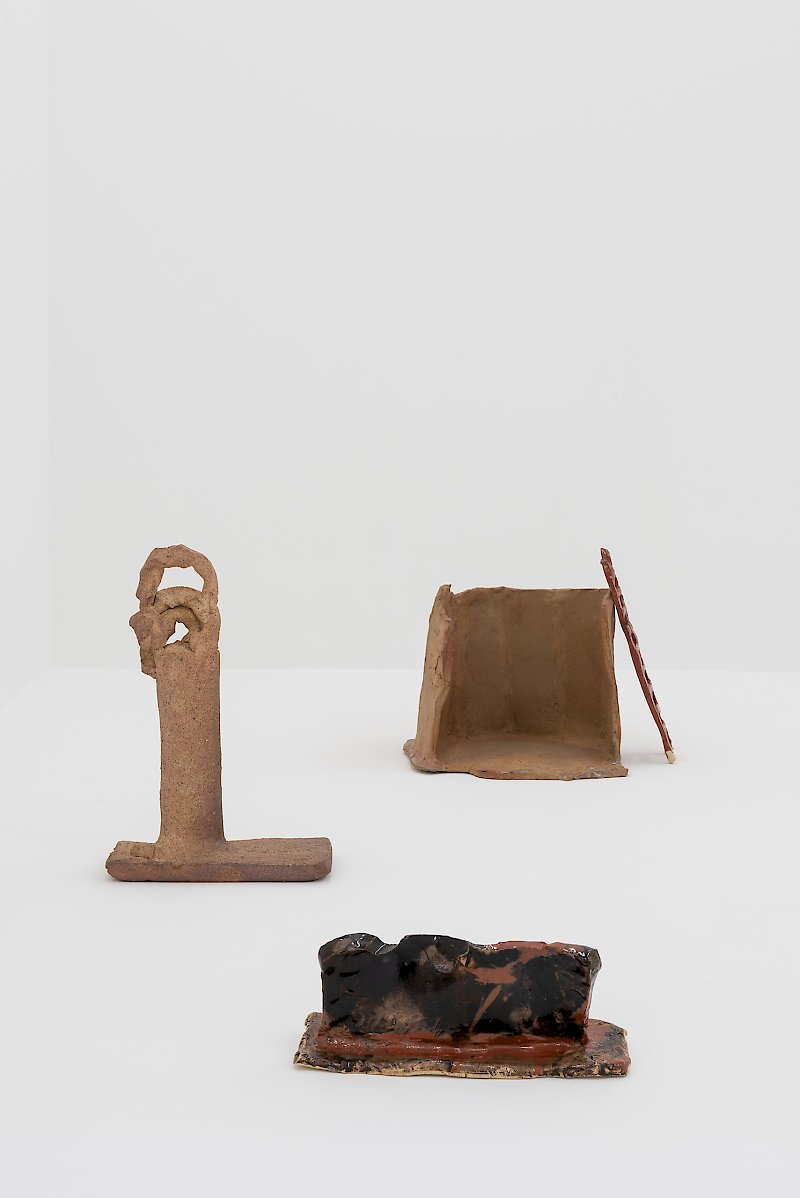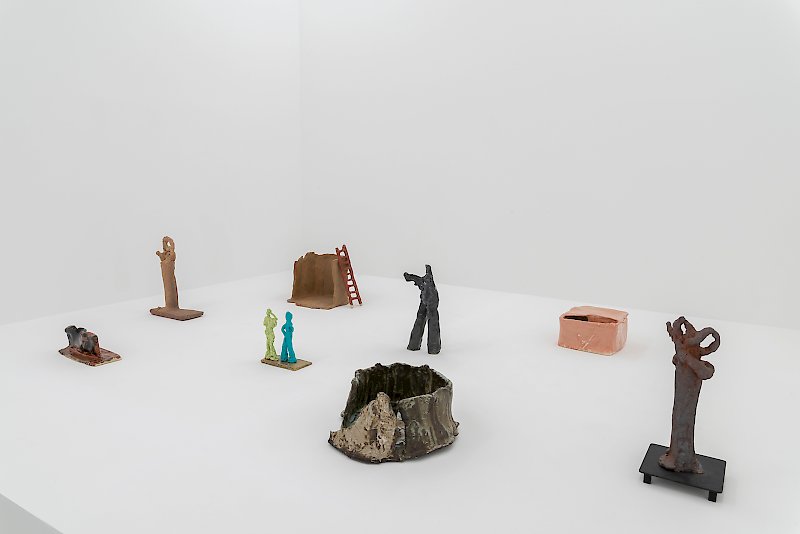Simone Fattal (*1942, Damascus) has lived and worked as an artist in many parts of the world, from Beirut to Paris, from Southern France to Northern California. Her nomadic biography and the related historical and cultural contexts are formative elements of her artistic practice: Tangible traces of ancient or archaic worlds are interweaved with our present condition and contemporary view. “Fattal’s history is a temporal mishmash, a reckless continuum in which time and place are leveled and the ancients mingle with the moderns.“ [1] In Persian theosophy there is a term for such a place—Nâ-kojâ-Abâd, the „land of nowhere”. The Arabic equivalent is âlam al-mithâl, which can also be translated as mundus archetypus—the world of archetypical images, existing actually and not only as object of our imagination.
Simone Fattal's sculptures are the manifest encounter of such archetypes. Ancient epics and mythologies, determining the course of the Mediterranean civilization for centuries, find into abstract forms by manual kneading of clay—Fattal’s primary medium. The priority lies in the physical and material relation between artist and material and the resulting figures or architectural structures evade the language of pure forms. The titles supplement the sculptures with multiple layers of meaning and enable them to gently, but firmly dwell on their secret origin and yet to be written fate.
Fattals collages intensify these links between history and present. Collected images from magazines, newspapers, post cards, photographies and contemporary images are condensed into collages of poetic quality. The collages, all of which were created this year, bear ponderous titles, not only referring to historic caesuras like our status quo (see Travel is Impossible), but imply significance in earth’s history (see La Terra Trema, or the series Earth Day). A vast variety of individual images and shapes results in coherent collages that require sensitive reading like Persian miniatures—narrative images or book illustrations which hide their key to understanding in the marginal detail.
History (see Were You Crowned With Laurel, Or With Fire, Oh Damascus), memories of abandoned places (see I Love Damascus), mythologies and nature, especially trees, can be found in her drawings and watercolors. The exhibited paintings are titled Der Spaziergang (The Walk) based on the novella by Robert Walser. This manifests Simone Fattal’s lifelong affinity to literature. Trained as a philosopher, then turned artist, she founded Post-Apollo Press in California in 1982, which specializes in poetry, experimental writing and the translation of American, European and Middle Eastern authors. The name of the publishing house refers to the historical event of the Apollo space mission to the moon.
In their film Les Statues Meurent Aussi (“Statues Also Die”) from 1953 Chris Marker and Alain Resnais defined culture as a “botany of death”—a cycle in which men enter history when they die and sculptures enter art after their “death”. Simone Fattal’s œuvre turns this logic upside down: Her sculptures are not artifacts of bygone times and cultures, but living agents. They arise from the earth—the sedimented memory of history—and witness a past, which became a living present, opening up to and embracing the future. This is how the “botany of death” becomes a “poetics of life”.
[1] Negar Azimi, On Simone Fattal, see: https://www.simonefattal.com/on-simone-fattal/ (viewed: October 16, 2020)






